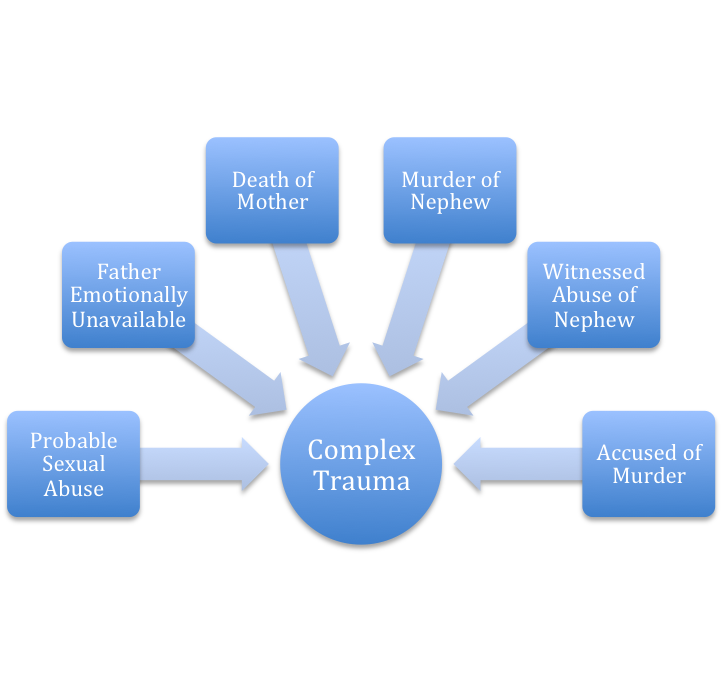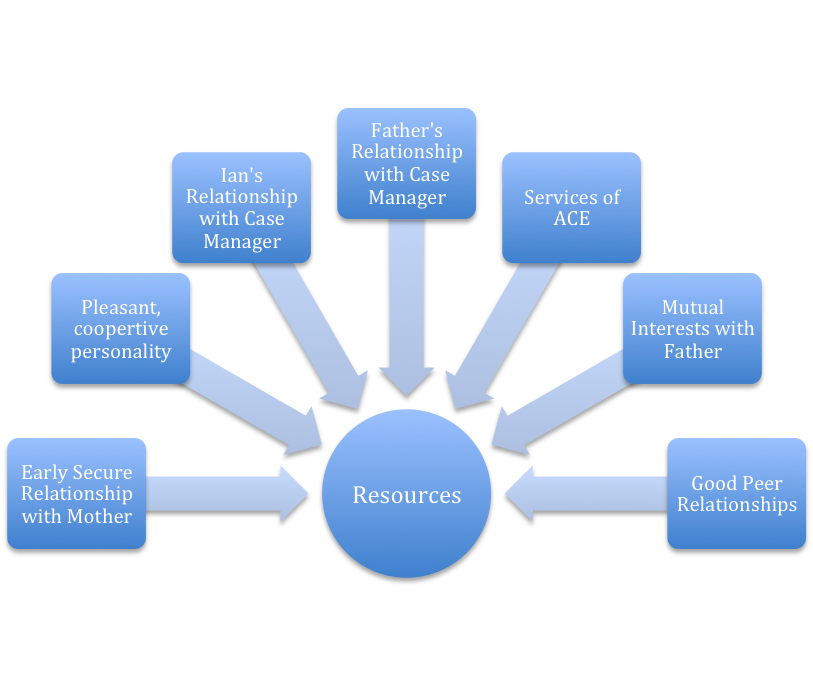Child Complex Trauma & Good Outcomes Blog Series by Dr. Jane Gilgun
The purpose of this blog series is to describe complex trauma, to show the importance of secure relationships, and to show factors associated with good social service outcomes when children have experienced complex trauma. Case materials bring the issues to life.
The last two blog posts (Part 1 and Part 2) provided an overview of complex trauma and how children learn to cope with complex trauma, particularly when insecure relationships are the source of a child’s safe haven. In this post I introduce a case study where a parent eventually sought help for his son’s untreated trauma.
Case History
When Ian was five, his mother died of cancer. Shortly after, his older sister, her husband, and their toddler daughter moved into the family home. The sister’s husband murdered his toddler daughter and accused Ian of the murder. Ian confessed to a police investigator: He thought he had killed his niece because he once hit her with a toy.
Despite Ian’s confession, the husband was convicted of the murder and is currently serving a 25-year sentence. His sister, whom Ian loved, moved out of his home. Ian has no other siblings.
This is a clear case of complex trauma. Figure 1 shows the multiple traumas that Ian experienced.
Ian and His Father, David
Ian’s father, David, didn’t believe in talking about problems. He was confident that Ian would forget about these events. He thought he had a great relationship with his son because they spent a lot of time together fixing motors and electronics and hunting and fishing.
He didn’t realize that despite this sharing of activities and the feelings of closeness, he was dismissive in regard to Ian’s psychological trauma. David’s belief systems kept him for seeing that his son needed professional help to recover from his trauma.
He did have a good relationship with his son in many ways, but he was dismissive of the effects of Ian’s trauma. David, too, had experienced trauma, with the death of his wife and the murder of his granddaughter being most prominent. Otherwise, he had an excellent job, earned a good income, and lived in a safe neighborhood with excellent schools and recreational opportunities.
Ian did well in school. Teachers described him as a good student, who was attentive in class, and had many friends. One teacher described Ian as “adorable” and said he was her favorite, although she tried not to show that she favored him. Figure 2 shows the resources that were available to Ian.
Reason for Referral
When Ian was eight, he sexually abused the three-year old daughter of his day care provider who lived next door. This was not sexual play, but penetration with some manipulation and force. (For further information about children’s coercive sexual behaviors, see Children with Sexual Behavior Issues.)
Ian’s sexual acting out raised questions about whether his sister’s husband, a registered sex offender, had sexually abused Ian years earlier. The principal of Ian’s school, in consultation with a police officer who specialized in families and children, contacted the All Children Excel (ACE) Program to see if they could be of help.
ACE serves children and families where the children have committed acts that would be charged as felonies if by law they were old enough. In the state where Ian lived, the age of accountability is 10. ACE serves families over many years until it is clear that the risks and traumas for criminal behavior are offset by a long record of coping well, doing well in school, family, and community. For further information about ACE, watch ACE Overview and ACE Interventions.
Long-Term Relationships
Mary became Ian’s ACE case manager. To Mary, Ian’s sexual acting out indicated that Ian had not received the help he required to cope with, adapt to, and overcome the effects of the complex traumas he had experienced earlier in his life.
For the first three years that Mary worked with the family, David refused to give permission for Ian to have any therapy. For example, Mary recommended sex-specific therapy, designed for children with sexual behavior issues. She also recommended trauma-focused therapy that would involve David and Ian to participate. David continued to believe that Ian’s issues did not require special attention and would simply fade into the background.
Mary maintained a good working relationship with Ian and David in terms of family visits and helping Ian participate in the many programs that ACE provided, such as outings to pools, parks, and sports events. The relationship was close enough that both Ian and David called Mary, Ian’s second mom.
When Ian at age 11 sexually abused a younger boy, Mary once again pointed out the need for sex-specific treatment as well as trauma-specific family therapy. This time, David agreed. David and Ian also sought psychoeducation for grief and loss as well as sexual development and child sexual abuse. Son and father learned to talk about feelings and emotion-laden topics with each other.
Outcome
The outcome so far has been good. Ian graduated from high school and is studying computer programming while working part-time. He has had the same girlfriend for two years and spends time with friends who are also attending college and who, like Ian, engage in prosocial activities. Ian’s life would have been much different without the services of the case manager and the eventual change in David’s beliefs.
More information about Ian’s case and the work Mary did with him and his father David is at ACE Case Studies and in my 2011 book, The NEATS: A Child & Family Assessment (3rd edition)1.
Questions To Consider
Please feel free to leave a comment below with your input on the questions posed here.
- What are your thoughts about the importance of long-term relationships between service providers and service users in child and family work?
- Are they possible at your agency? If they are, what are your observations? If they are not, what do you think is best for families and children?
Next Week
I will be using this case study for next week’s post to highlight factors associated with good outcomes.
Source
- Gilgun, J. F. (2011). The NEATS: A child & family assessment (3rd ed.). Amazon.

